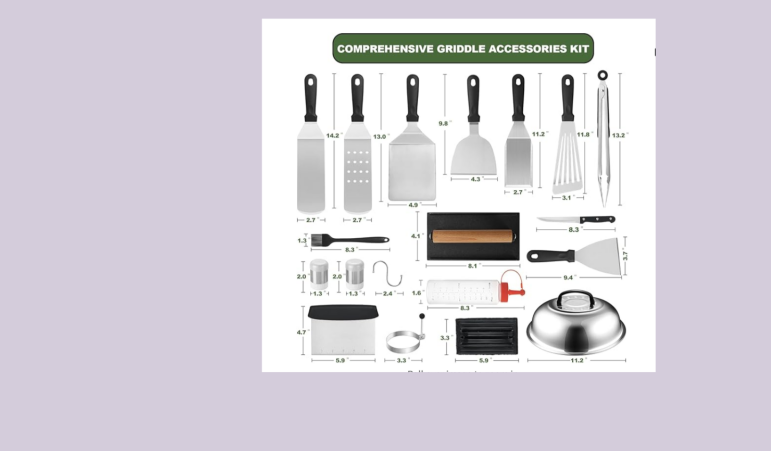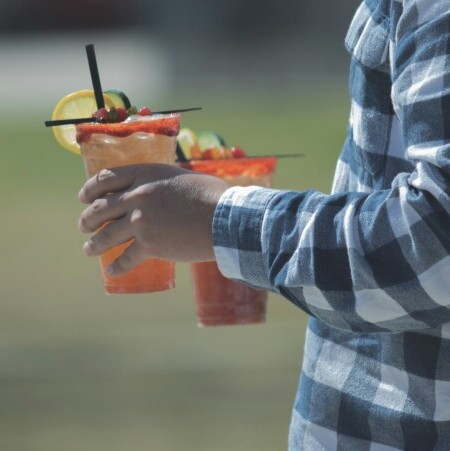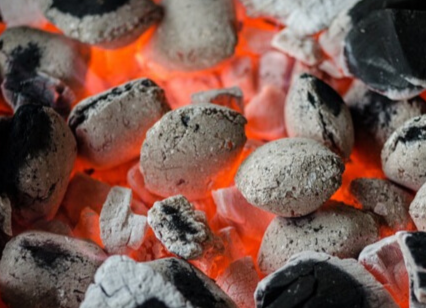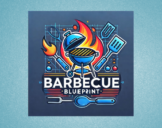Grilling is awesome, especially when you know the lingo. Here’s the lowdown on some basic terms to get you started. When someone says they’re ‘searing’ a steak, they’re talking about that quick, high-heat cooking method that gives meat that tasty crust on the outside. It’s about locking in the juices and flavor, not just about looking good. Try using a hot cast-iron skillet to nail this technique.
Ever bought some meat and a marinade, then wondered what to do next? ‘Marinating’ is soaking your meat in a flavorful liquid – think herbs, spices, and whatever else tickles your fancy. This not only adds taste but helps tenderize tougher cuts too. Overnight is usually the best bet for deep flavor, but even a few hours can make a difference.
Then there’s ‘basting’, which sounds fancy but isn’t rocket science. It’s just brushing or pouring juices, butter, or sauce over food as it cooks. This is all about keeping things juicy and adding layers of flavor. If you love BBQ sauce, keep a brush handy for that final touch just before taking the food off the grill.
A picture is worth a thousand words, right? Imagine an image showing these brilliant techniques side-by-side, with captions. That kind of visual can make understanding these concepts way easier, especially for newbies ready to step up their grilling game.
Decoding Equipment and Tools Language

Getting into the grilling game means getting your head around some essential tools. Ever seen someone struggle at a barbecue without proper gear? Not cool. Let’s get you sorted with the must-haves that make grilling a breeze.
First off, tongs and spatulas—two words that lead your grilling. Tongs are your right hand, literally. They grab, flip, and move your food around while keeping your hands safe from the heat. A good pair of sturdy, long-handled tongs is a grill lover’s best friend. Spatulas, on the other hand, are great for flipping burgers and keeping things intact.
Now, you might be wondering about firing up the grill, and that’s where a ‘chimney starter‘ comes into play. This handy tool is for charcoal lovers. It’s a quick way to get those coals glowing without the need for lighter fluid, which can affect the taste of your food. Just stuff some paper in the bottom, load it up with charcoal, light it, and you’re good to go.
There’s also a whole language around the grill itself. If you enjoy a spontaneous Sunday afternoon grill session, a gas grill may be your best buddy because it’s quick to ignite and simple to control. For the more patient and flavor-driven, a charcoal grill brings that smoky taste that’s hard to beat.
Imagining trying to remember all this? Picture an illustration showing each tool with labels and brief descriptions. A picture like that can be a lifesaver when you’re setting up for your next barbecue, new terminology and all.
Unveiling Cooking Methods and Styles Jargon

When hitting the grill, knowing whether to go with ‘direct heat’ or ‘indirect heat’ is key to a successful BBQ. Direct heat is when your food sits right above the flames, perfect for quick cooking things like burgers or steaks. Indirect heat is more like a mini-oven, with the food offset from the fire, ideal for slow-roasting meats like ribs or whole chickens. Learning to juggle between these methods will take your grilling to the next level.
Ever heard someone brag about their smoking skills and thought they were talking about the good old-fashioned way of preserving food? In grilling terms, ‘smoking’ is about cooking low and slow, letting the meat soak in that aromatic smoke. Usually done with wood chips or chunks, it’s a way to infuse foods with deep, rich flavors. Try adding different woods, like hickory or apple, to see which flavors you dig the most.
And who doesn’t love a good ‘rotisserie’? This method involves skewering meat on a rod and rotating it over the heat. The result is even cooking with that classic crispy skin on your chicken or gyro. Imagine having your guests drool over the rotating magic happening in your backyard.
Visuals can go a long way in making these methods stick. An infographic comparing direct vs indirect heat, or smoking vs rotisserie, can provide a quick reference and inspire you to shake up your grilling style.
Demystifying Grilling Historical and Cultural Terms

Grilling has a rich history filled with terms that carry stories as flavorful as a smoked brisket. Ever wondered where the word ‘barbecue’ comes from? It’s believed to have originated from the Taino word ‘barbacoa’, describing a cooking method used by Caribbean indigenous peoples. Over time, it evolved to become the social and culinary centerpiece we love today.
The term ‘pitmaster’ isn’t just a catchy title; it’s a badge of honor. A pitmaster is someone with the expertise and patience to conjure delicious creations from the grill, often in a BBQ competition setting. It’s more than just having skills; it’s about consistently delivering mouth-watering perfection.
Different cultures have shaped grilling into what it is now, adding unique terms and techniques. In South Africa, the ‘braai’ is more than just grilling meat; it’s a cultural ritual bringing people together, complete with its own set of rules and styles. In Korea, ‘bulgogi’, involving thin slices of marinated meat grilled over an open flame, brings a whole new flair to the experience.
Imagine following these terms from their roots to their modern uses in a pictorial timeline. This not only adds context to your backyard adventures but also deepens respect for the diverse practices that have perfected the art of grilling across the globe.
Some Common Terms for Grilling

Here is a short list of some of the basic terms you will need to know in your journey to becoming a pitmaster or a master griller:
- tongs
- spatula
- grill brush
- thermometer
- fire-resistant gloves
- probe
- indirect heat
- direct heat
- timer
- marinade
- charcoal
- propane
- wood pellets
- charcoal chimney
- grill mat
- ka bobs
- slow cooking
- low and slow
- sear
- smoke.
When you are first starting out you will not be aware of most of these terms but with experience and asking others for information you will begin to learn and use each of these terms as you gain experience.

The article “Grilling Terminology 101: Your Go-To Glossary” on Barbecue Blueprint is an absolute gem for anyone passionate about grilling, from beginners to seasoned pitmasters. It’s refreshing to see such a comprehensive and well-organized glossary that breaks down the often-intimidating jargon of the barbecue world. The detailed explanations make it easy to understand terms that can otherwise be confusing, like “reverse searing” or “the Maillard reaction.” It’s clear a lot of thought went into crafting a guide that’s both informative and accessible, which is perfect for helping readers up their grilling game.
What I particularly appreciate is how the glossary goes beyond just definitions and offers a deeper understanding of the techniques and science behind grilling. For instance, the explanations around smoke profiles and direct versus indirect heat are incredibly practical and can immediately improve someone’s cooking results. This is the kind of content that not only educates but also inspires readers to try new techniques and elevate their grilling skills.
One term I’d love to dive deeper into is “resting meat.” While the glossary covers its purpose well, I’m curious—are there specific tips for resting times based on different cuts or grilling styles? It’d be great to hear how others approach this to maximize flavor and juiciness!
Laura,
Depending upon the type of meat will determine the length of time you allow the meat to rest. For example, if the meat you are resting is chicken then you will only let it rest for just a few minutes, say 15 minutes. On the other hand, if you are resting brisket, then you will need to let it rest for 30 minutes or longer. Resting any of your food allows the juices to be reabsorbed into your food making for moist delicious meat.
Jerry
“Grilling really is an art, and this blog breaks it down beautifully! From mastering techniques like searing and marinating to understanding the tools of the trade, it’s a treasure trove for beginners and seasoned grillers alike. I especially love the idea of pairing visuals with explanations—it makes the process so much more approachable. And the cultural insights? Such a cool touch to connect history with modern grilling. Time to fire up the grill and put some of these tips into action!”
Herman,
Some people need visuals to go with the explanations so they can have a better grasp of what to expect. Each culture has its own history on grilling and how it has helped shape their community or nation.
Once you understand the tools you have to work with you find your grilling experience deepens and you gain confidence in how to become a master at the grill.
Jerry
This is such a fantastic guide for anyone looking to level up their grilling knowledge! I love how the post breaks down terms in a way that’s easy to understand, even for beginners. The comparison of grilling methods like direct vs. indirect heat is super practical and inspires confidence for experimenting with different techniques. The cultural history behind terms like “barbecue” and “braai” adds a really nice touch, giving more depth to the art of grilling. Definitely bookmarking this for future backyard BBQs! -Maksim V 🙂
Maksim,
Having a comprehensive guide helps not only the grill master but the guests as well. Information on how different areas of the world grill can often be used in your personal experience when you grill. There may be the suggestion of different heats for grilling as well as different spices.
Jerry
This is such a helpful glossary for anyone looking to level up their grilling skills! I really appreciate how detailed and easy-to-understand the explanations are. It’s perfect for both beginners and seasoned grillers who might need a quick reference. I’m curious, though—are there any terms or techniques you’d consider essential for someone just starting out with grilling? It could be overwhelming for a newbie, so I’d love to hear your top recommendations for where to focus first!
Hanna,
My top recommendation when first starting out is grilling something simple, such as hamburgers, hot dogs, or bratwurst. As you gain experience, you may want to start experimenting with other dishes as well. Before you try something hard do just a bit of research for the spices and herbs involved. Experiment with one dish at a time until you reach the flavor profile you desire.
Jerry
Grilling enthusiasts, this post is a goldmine! Whether you’re a newbie or a seasoned pitmaster, the breakdown of techniques, tools, and cultural grilling gems here is super insightful. The explanations of key terms like searing, marinating, and basting are perfect for anyone looking to elevate their grilling game. Searing that perfect crust or marinating meat overnight to lock in flavor? Total game-changers. And don’t even get me started on basting—keeping food juicy while layering on flavor is where the magic happens.
The section on essential grilling tools is equally on point. Tongs, spatulas, and chimney starters—these are the unsung heroes of a great barbecue. Pairing the right tool with the right grill, whether gas or charcoal, makes all the difference. Plus, the comparison of direct vs. indirect heat and the introduction to smoking and rotisserie techniques are excellent for those wanting to experiment.
Lastly, tying grilling history and cultural terms into the post adds depth. It’s fascinating to see how traditions like the South African braai or Korean bulgogi influence modern grilling. A pictorial guide or infographic alongside this content would make it even better. Amazing read!
Andrejs,
Many people are unsure of themselves when they begin their grilling journey. I have found that having the terms available and explained help people understand the complexities of grilling. Grilling by itself seems simple, but the different techniques in grilling is the confusing part. This guide helps clear some of the confusion.
Jerry
Your glossary is such a fantastic resource for both beginner and seasoned grillers! I really appreciate how you’ve broken down the terminology in a way that’s easy to understand while still being comprehensive. Grilling can sometimes feel a bit intimidating with all the jargon, but this guide makes it approachable and even fun to learn.
The inclusion of lesser-known terms like ‘reverse sear’ and ‘spatchcocking’ is particularly helpful—these techniques can really elevate grilling results, and it’s great to have clear explanations for them. The detailed descriptions of tools and methods also make this a great reference for planning future BBQs.
I would like a printable version or a quick reference sheet to take with me while grilling. It could be a handy tool to keep near the grill! Can you do that?
Thank you for creating such an engaging and informative guide—it’s a must-read for anyone looking to up their BBQ game!
Kevin,
I agree these terms are quite useful at any level of your grilling expertise. You will find the more you use these terms, the more you remember the terms and their meanings. I recommend you bookmark my website for any published updates. Look for my email updates in the future.
Jerry
What a wonderful post you have written, that really breaks down the terminology into simple lay-man’s terms. I am by no means an experienced cook and sometimes see some terms in recipes and cookbooks, filled with terminology that assume that these terms are understood by the users. I come from Australia, and even though we call ‘outside’ cooking ‘Bar-b-queing’, the rest of the terms and tools you identify and explain make a whole lot of sense to me. Also in Australia, the whole trend of ‘smoking meat’ has really taken off and is now a staple of any one who just loves to Bar-b-que! Apart from smoking, I can see that most of what you describe and de-mystify will apply in the indoor kitchen. Great job!
Leanne,
While grilling is the oldest form of cooking, learning how to take those same recipes indoors allows you to have some of your favorites anytime. You may not get the same flavor inside as you do from the grill but it allows you to try different spices to increase the flavors you appreciate the most.
Jerry
This glossary is a great resource for grilling enthusiasts! The explanations really make it easier to understand essential terms like “searing” and “basting.” One thing I’d love to explore further is the “smoking” technique—what wood types do you all recommend for different meats? Also, how do you handle the balance between direct and indirect heat for things like ribs or larger cuts of meat? Would love to hear others’ tips and experiences to improve our grilling game!
Zachary,
I have found beef does extremely well with hickory, mesquite, or pecan. I also use hickory with ribs, but I also like to use apple and cherry with ribs as well, there are times I prefer the sweeter taste with those two fruitwoods. When using indirect heat, maintain an even temperature for the entire cooking process. By maintaining an even temperature, your grilling experience will get better over time.
Jerry
Hello Jerry,
Okay, here we go, I have lots of questions! I myself have grilled for many years. But recently my son has taken over the barbecuing duties. Personally, I have had all the grills, propane and charcoal, direct or indirect heat, heck I have gone through about six or eight charcoal chimneys. The only thing I have not had long enough to really enjoy it is a smoker! I had a Charbroil charcoal smoker, used it three times and it was stolen off of my back patio. That was twenty plus years ago and I am ready to give it a try again, except I believe I want a propane smoker. I t is a lot easier to regulate the heat and with the price of charcoal these days a lot less expensive.
First of all, the smoking chips. I have always loved a barbecue restaurant that used nothing but hickory. I have bought hickory chips and have not been pleased. I had better luck with mesquite. It gave me more flavor than the hickory chips. I must have just got a bad brand of chips, they were inexpensive, and I bought them at Menard’s which is not a great grilling HQ! I have looked at Masterbuilt, Dyna-Glo and Cuisinart. What do I need to shop for, what are the best bells and whistles that is good to have on a propane smoker?
Thank you,
Mark
Mark,
It is sad that someone decided to love your Charbroil smoker instead of letting you experience that great charcoal flavor. My suggestion for using wood chips on a propane smoker is to have a container you can put your damp chips in that will stand up to the heat. Before you begin the smoking process allow the chips to begin slightly smoking before you put your food on. You will have much better results.
Jerry
This is a fantastic resource for any aspiring or seasoned griller! The explanations are clear and concise, and the emphasis on visuals is spot-on. This article not only teaches you the lingo but also helps you understand the deeper meaning and history behind grilling.
I really enjoyed the article. A combination of the images and the list of basic terms have given me ideas to step up my grilling game!
Rod,
This article is meant to be a guide for those who are just starting out and may need some guidance on the terminology that is used when grilling. Learning the history of grilling from different regions of the world help you understand the different flavor profiles and increase your experimentation for that great flavor.
Jerry
Wow, what an incredible and comprehensive guide! Grilling Terminology 101: Your Go-To Glossary truly takes the guesswork out of grilling and breaks down some of the most intimidating jargon into easily digestible concepts. As someone who enjoys grilling but still considers themselves a learner, I found the explanations around techniques like “searing” and “basting” particularly helpful. Understanding not just how, but why these methods work, makes such a difference in the confidence and results at the grill.
I also appreciate how the guide addresses essential tools like tongs, spatulas, and chimney starters. Having the right equipment can transform the grilling experience from frustrating to enjoyable, and this glossary makes it clear what’s worth investing in. The comparison of gas vs. charcoal grilling and the mention of tools like fire-resistant gloves is practical and thoughtful—it’s clear this guide was written with both beginners and experienced grillers in mind.
The cultural history woven throughout is a standout feature for me. Learning about the origins of terms like “barbecue” and practices like the South African braai adds so much depth to the grilling experience. It’s a reminder that grilling isn’t just cooking; it’s a celebration of traditions and cultures around the world.
If I could suggest one addition, it would be a printable or infographic version of this glossary. Having a quick reference guide handy while grilling would be fantastic, especially for those just getting started. A visual breakdown of tools, methods, and cooking styles would make this resource even more accessible and engaging.
Thank you for creating such an informative and inspiring guide! It’s definitely sparked some new ideas for my next BBQ adventure, and I can’t wait to try out some of these techniques and explore grilling traditions from around the world.
Shawn,
Grilling is truly a celebration of the traditions and flavors of one’s ancestry. There are areas around the world where one family is known the be the pitmaster for the village. The times when this family grills for the village becomes a celebration for the village. These individuals and families spend generations perfecting their craft.
Jerry
I will work on creating a downloadable copy of grilling terms and tools. Look for it in the near future.